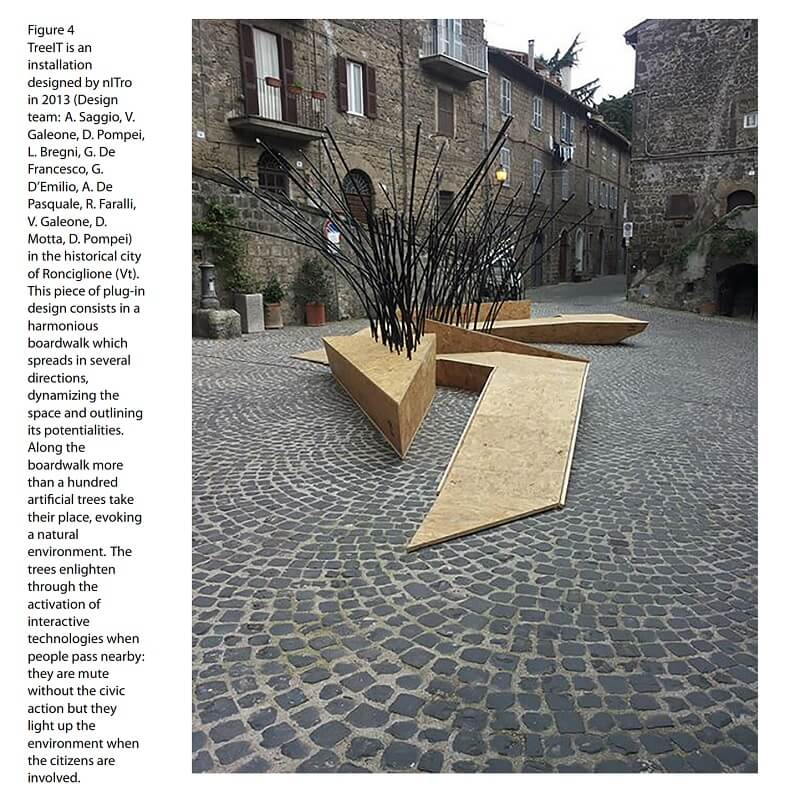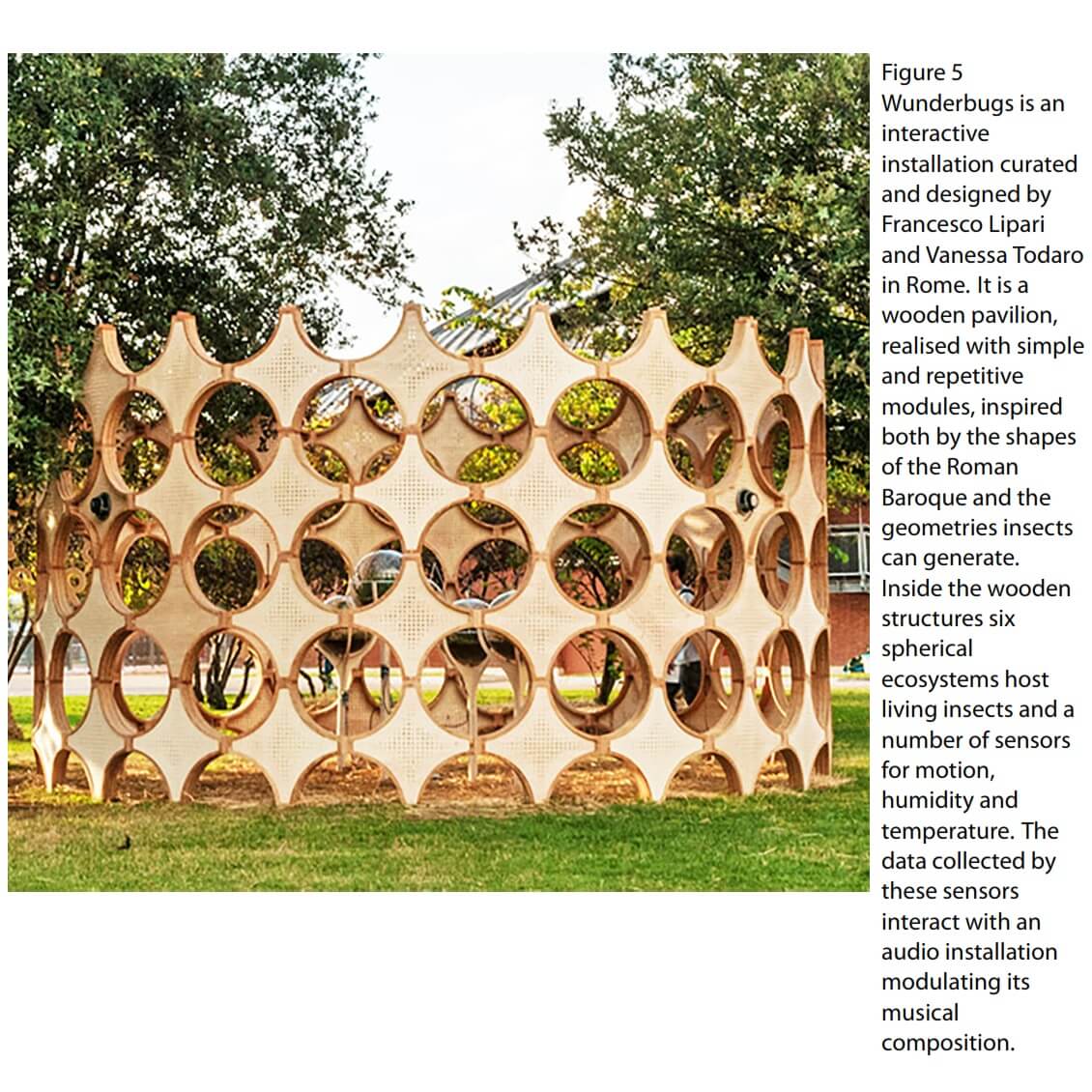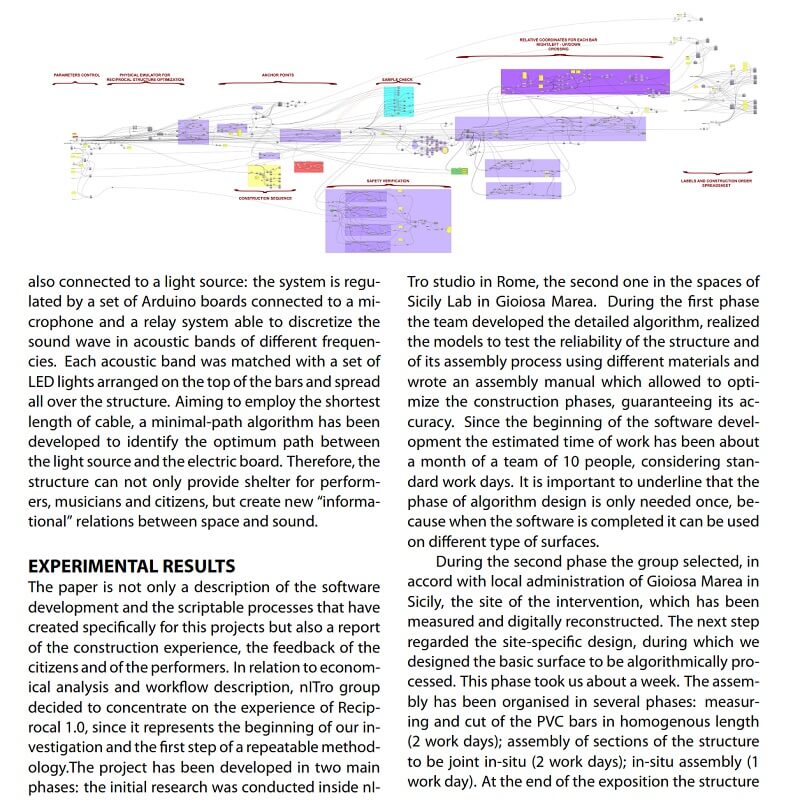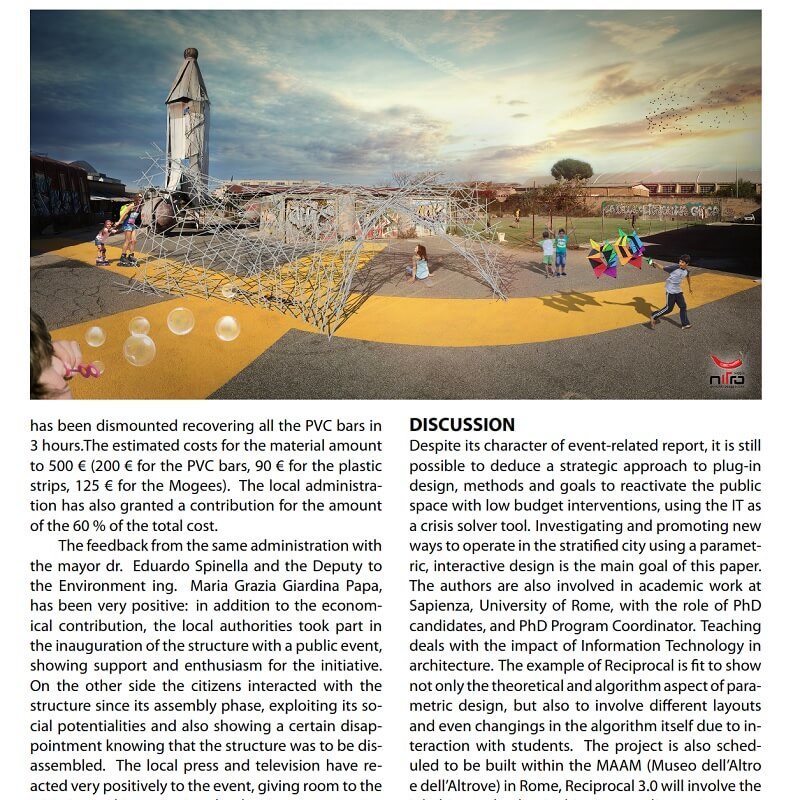Plug-In Design
Plug-In Design
Reactivating the Cities with responsive Micro-Architectures. The Reciprocal
Experience
Matteo Baldissara1, Valerio Perna2, Antonino Saggio3, Gabriele Stancato4
1,2,3,4Dipartimento di Architettura e Progetto, Corso di dottorato in Teorie e Pro-
getto – DiAP – Sapienza Roma
1,2,3,4{matteobaldissara|valep.arch|antosag|gabriele.stancato}@gmail.com

Every city has under utilized spaces that create a series of serious negative effects. Waiting for major interventions, those spaces can be reactivated and revitalized with soft temporary projects: micro interventions that light up the attention, give new meaning and add a new reading to abandoned spaces.

In this article, authors call this kind of operations “plug-in design”, inheriting the term from computer architecture: interventions which aim to involve the citizens and activate the environment, engage multiple catalyst processes and civil actions. Plug-in design interventions are by all meanings experimental, they seek for interaction with the users, locally and globally.

Information Technology – with its parametric and site-specific capabilities and interactive features – can be instrumental to create such designs and generate a new consciousness of the existing environment. With this paper, authors illustrate how two low-budget interventions have re-activated a forgotten public space.

Parametric design with a specific script allowing site-specific design, materials and structure optimization and a series of interactive features, will be presented through Reciprocal 1.0 and Reciprocal 2.0 projects which have been built in 2016 in Italy by the nITro group.






























Comments